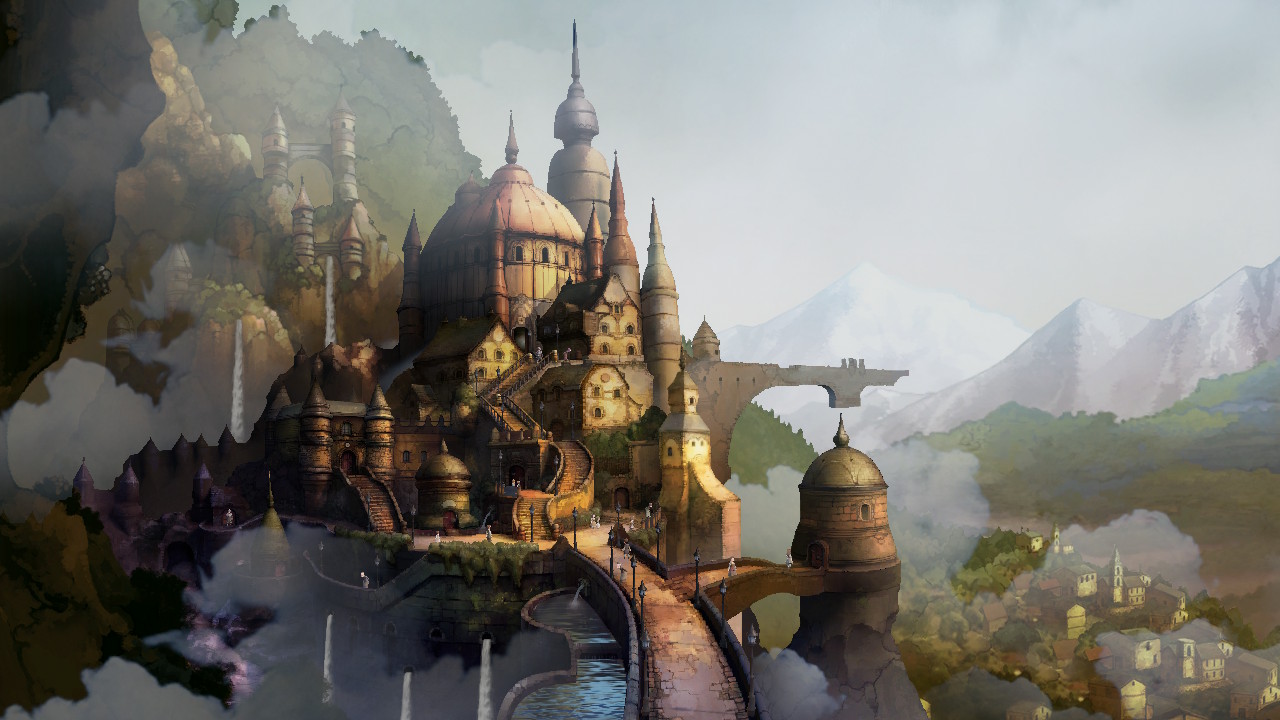Tom's Guide Verdict
Bravely Default II is an excellent turn-based JRPG, full of rich gameplay systems, endearing characters and flexibility that welcomes new players. You don’t need to have played the previous games to enjoy this one.
Pros
- +
Beautiful graphics
- +
Cute character and town designs
- +
Flexible job system
- +
Deep JRPG mechanics
Cons
- -
So-so main story
- -
Tedious side quests
- -
Can be a bit grindy
Why you can trust Tom's Guide
Bravely Default II is yet another fantastic JRPG in the Nintendo Switch’s ever-growing library. It not only draws in players who crave a nostalgic roleplaying experience, but it also welcomes newcomers with a flexible class system and easy-to-understand turn-based combat. The story is fairly predictable and not very deep, but that’s OK. Your party of four characters is on a mission to save the world from certain doom, after all.
All of this combined makes for a JRPG that straddles the line between classic and new. You don’t need to have played the previous Bravely Default or Bravely Second to understand the plot. Bravely Default II is a new, self-contained story. That being said, if you’ve played either or both of the previous games, you’ll feel right at home with this one. Even though it’s been a really long time since I last touched a Bravely game, I found Bravely Default II easy to pick up and enjoy.
This is a full-priced, $59.99 JRPG, and it won’t be for everyone. Even though it’s very accessible to new players, it still features mechanics that won’t be suited to all play styles. A lot of the side quests can be tedious and there’s a lot of grinding to be done. However, Bravely Default II is one of the best games on the Switch right now. Read on for our full review to find out why.
Bravely Default II review: Gameplay
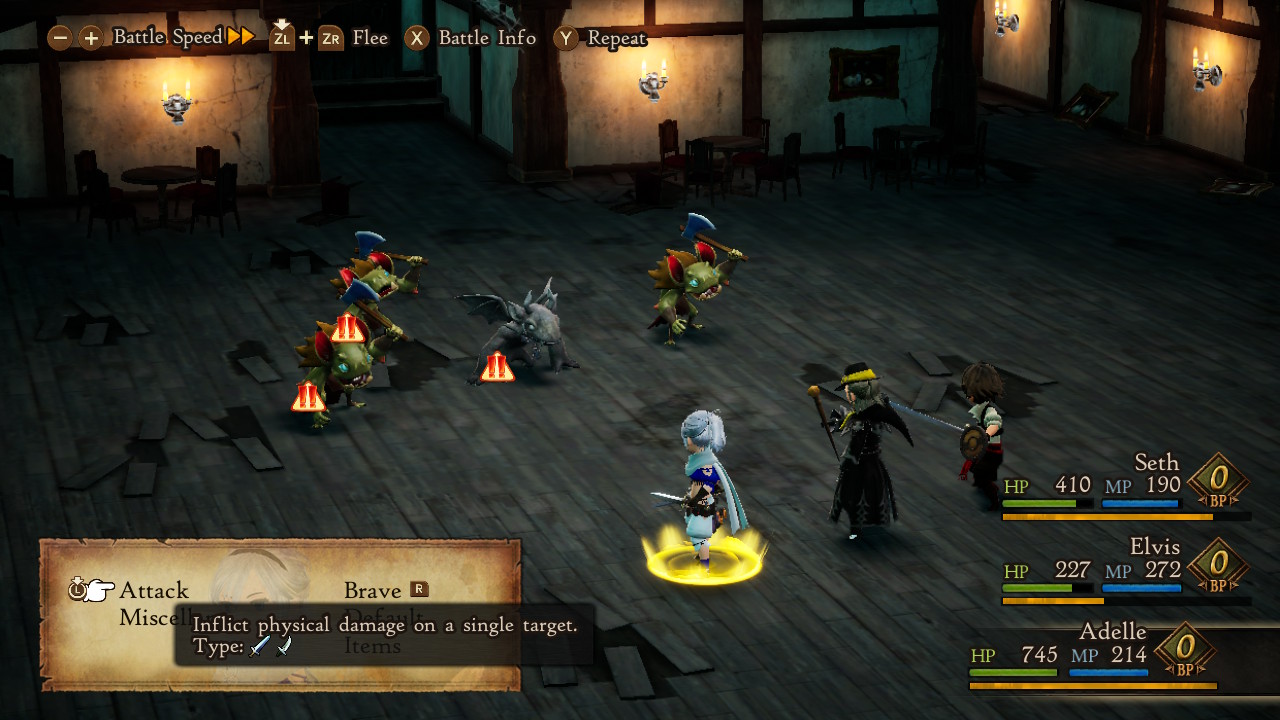
At the core of Bravely Default II’s combat are the Brave and Default systems. In combat, you have the option to do a basic attack, activate an ability or use an item. Performing an action consumes one Brave Point (BP), which you earn each turn. However, you can use the Default command to bank that BP to use later, meaning that your character will do nothing that round. The next time it’s their turn, you can use the BP you’ve accumulated to perform two actions, or use the Default command again. You can bank up to three BP.
On the flip side, you can go into the negative for BP by using the Brave command on a fresh turn. This lets you unleash a flurry of attacks, get a teammate back up, or heal yourself all in the same round. However, on subsequent turns, you will do nothing until you pay back your negative BP balance.
Go all out or save up your BP? It’s up to you. Some boss battles are easier to tackle when you can unleash everything at once to overwhelm the enemy's healing mechanics.
When outside of combat, you’ll be exploring an overworld. There are treasure chests and items to find, and enemies will be wandering around the play areas. You can avoid them if you’re smart (they might run away if you’re more powerful than them!), or you can launch a surprise attack on them if you’re careful.
You’ll also visit several towns, presented like dioramas for easier exploration. Here you will find key characters for the main story, other NPCs for side quests, or shops to stock up on critical items like healing potions, phoenix down and tents.
Bravely Default uses a flexible class system called Jobs. These Jobs consist of main and sub-jobs, meaning that you have a primary class and a secondary one. This leads to potent party compositions, and a lot of flexibility to play how you want. You can change Jobs at any point outside of combat, and you gain Job experience, which helps you learn new abilities, separately from character experience.
Bravely Default II review: Story and setting
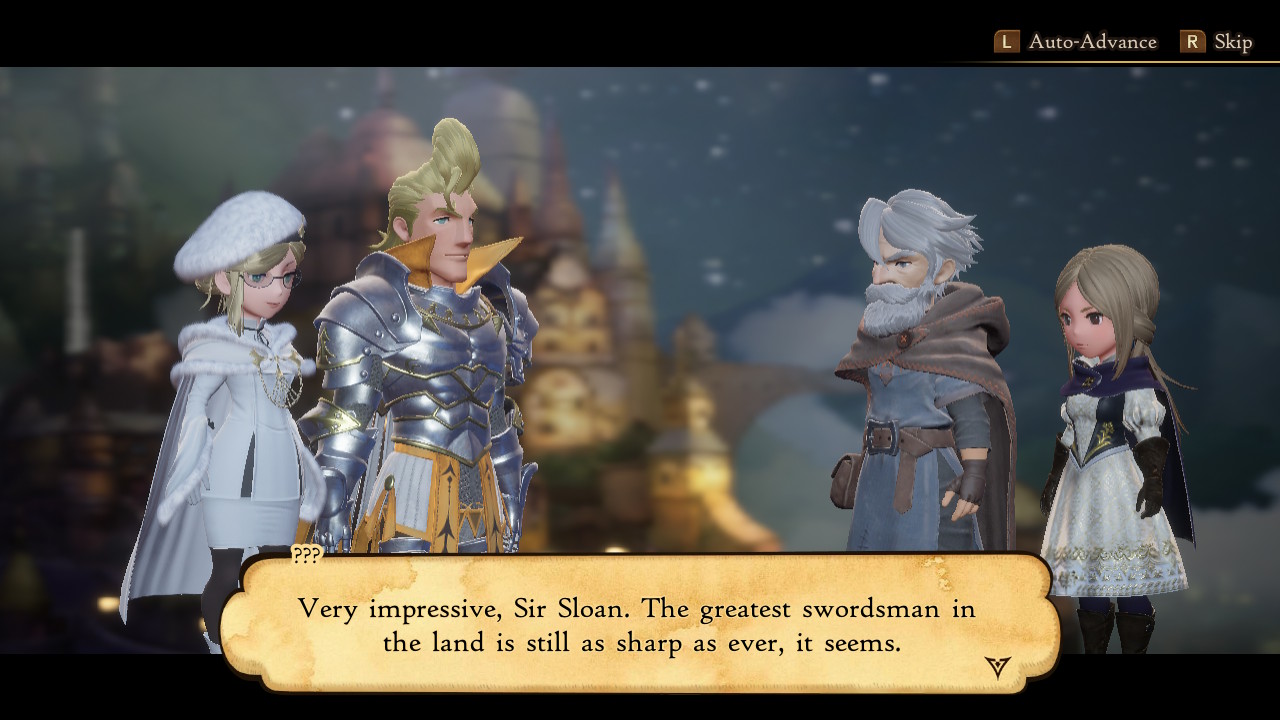
The story of Bravely Default II doesn’t tread any new ground whatsoever, but that’s actually fine. It feels like a familiar romp through a fantasy land, slaying monsters and exploring dungeons. The characters, both main and side, are interesting, and they interact with each other in fun ways. There’s not a whole lot of nuance to these characters, though: The good ones are good, and the bad ones are bad.
You take the role of a shipwrecked sailor, named Seth by default, as he faces a fierce storm at sea. However, he washes ashore after coming into contact with a supernatural entity. Upon waking, he meets a woman named Gloria, accompanied by an old man-at-arms, Sir Sloane. They take Seth back to the nearby town and he wakes up in an inn.
From there, he meets Elvis, a wandering scholar, and Adelle, a mercenary hired to accompany him, both of whom join Seth. They eventually come across an injured Sir Sloane (who saved Seth earlier) and help him rescue Gloria from the mercenaries that have captured her. Upon saving Gloria, Seth, Elvis and Adelle learn about the four Crystals, elemental pillars of the world that keep it in balance. These Crystals were stolen some time ago, with only the Wind Crystal in Gloria’s possession.
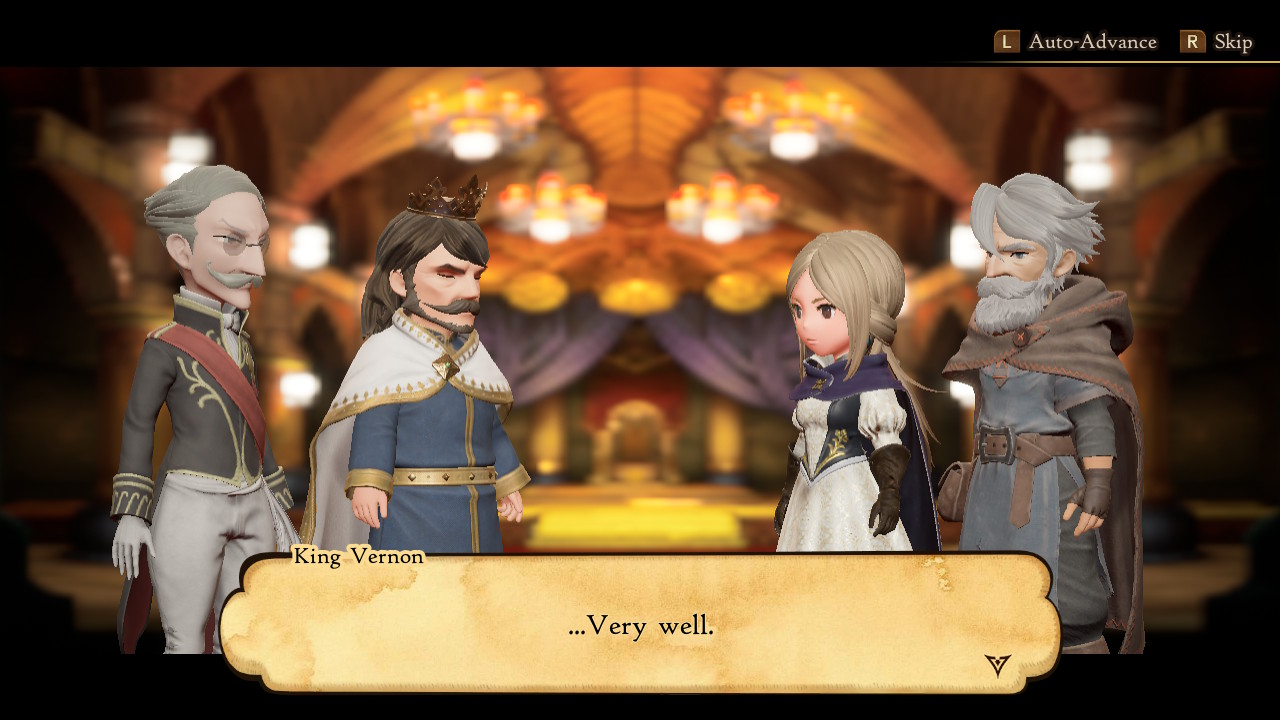
Seth, Elvis, Adelle and Gloria all set out to find the remaining three Crystals. They travel across the continent, braving monsters and nefarious villains. They meet some interesting characters along the way who help out for brief periods of time. The party also solves problems in many different areas.
This formula feels a bit repetitive, especially when you run up against monsters that are palette swaps of ones you’ve previously encountered. It’s not bad, per se, but it does hold the game back from its full potential.
The main quest is good enough on its own, but you’ll also be doing some side quests to earn experience and money. A few of these are all right, a handful are fun, and the rest are tedious and boring. They’re not bad, but they certainly detract from the overall pace of the game. You can skip them, of course, but then you’ll be missing out on valuable resources.
Bravely Default II feels somewhat like a pulp JRPG in terms of narrative, lacking depth and nuance to its plot and characters. However, not every game needs to have a groundbreaking plot with twists and turns aplenty.
Bravely Default II review: Visuals and sound
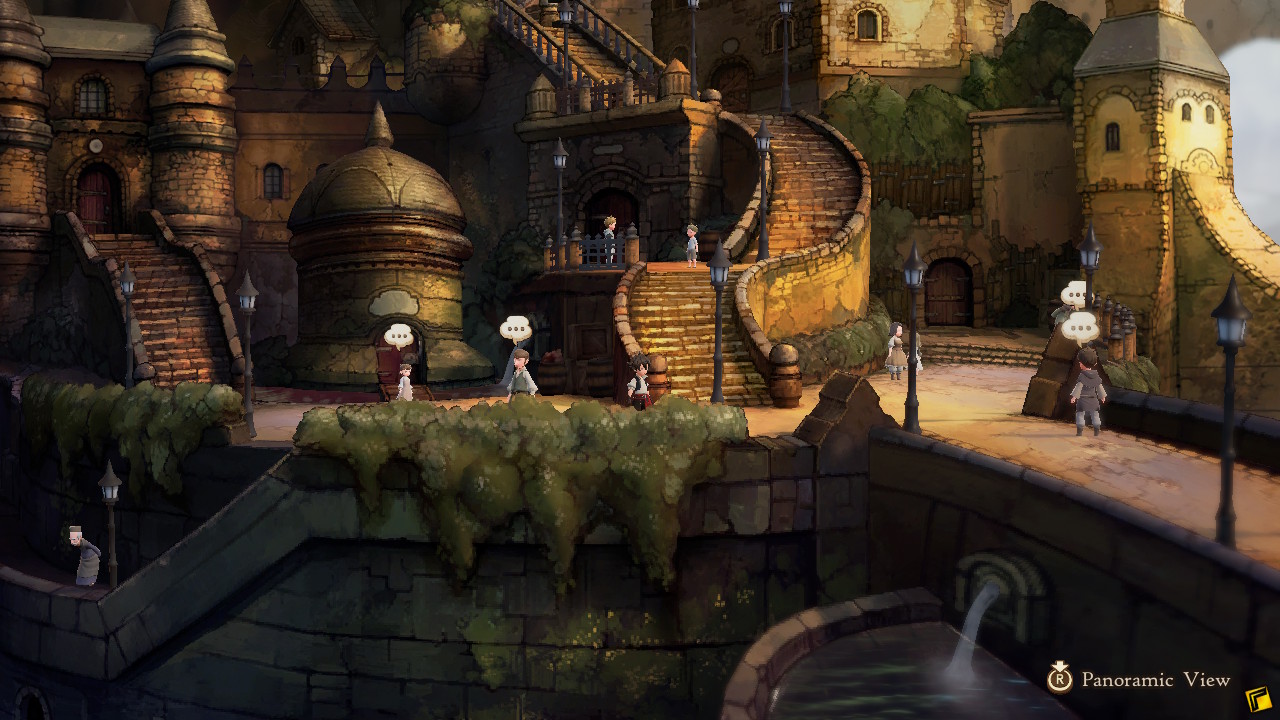
Bravely Default II features gorgeous overworlds, towns that look like watercolor paintings and cute, chibi-like character models. All told, it’s a beautiful game that significantly upgrades the visuals of its 3DS predecessors.
Hitting a new town is a wonderful experience as you look at how each one is laid out. Seeing the small NPCs wandering around adds to the game's fantastical storybook feel. The camera pans out when you enter town, leading to that diorama effect I mentioned earlier. You could also say it’s a bit like a pop-up book.
The sound and music also impress, with solid attack effects and excellent voice acting. You can switch between English and Japanese voices on the fly, and I didn’t find one to be better than the other. The music while exploring, conversing and fighting all complement the visual feel of the game very well. The soundtrack excels at adding some fun background noise while you play, without drawing too much attention to itself.
Bravely Default II review: Verdict
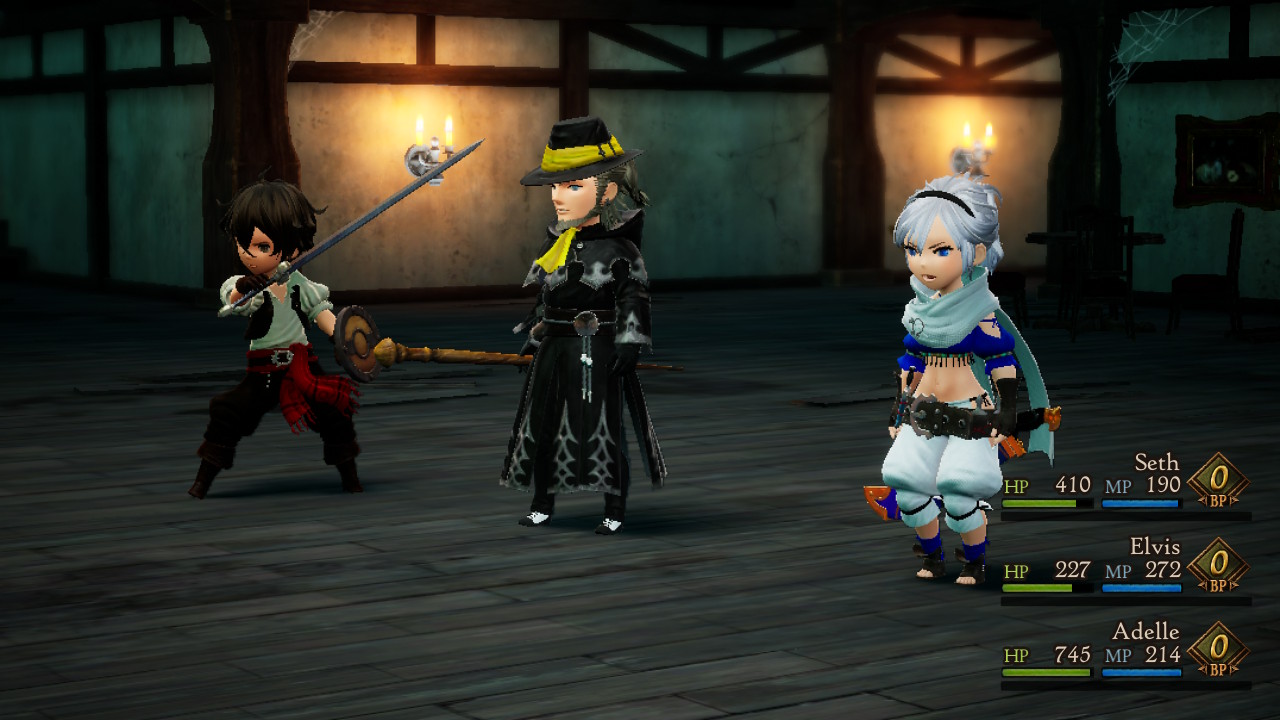
Bravely Default II is an excellent JRPG that welcomes genre veterans and newcomers alike. It may not tread new ground in terms of story, but it’s a fun adventure with lovable characters. The Brave and Default combat options add additional depth to the traditional turn-based battle system, and the Jobs make for interesting class combinations and party compositions.
Bravely Default II can be very grindy between major plot points. If you like mindlessly fighting monsters for several hours to increase your party’s efficiency, then you’ll love Bravely Default II. If your patience runs thin, or you just want to experience the story, this game may not be a good fit for you.
Bravely Default II does a lot of things really well. It may not be groundbreaking, but it’s extremely polished, and it accomplishes most of what it sets out to do brilliantly. The Switch has a ton of good JRPGs at its disposal, but Bravely Default II is by far one of the best.

Jordan is the Phones Editor for Tom's Guide, covering all things phone-related. He's written about phones for over six years and plans to continue for a long while to come. He loves nothing more than relaxing in his home with a book, game, or his latest personal writing project. Jordan likes finding new things to dive into, from books and games to new mechanical keyboard switches and fun keycap sets. Outside of work, you can find him poring over open-source software and his studies.
